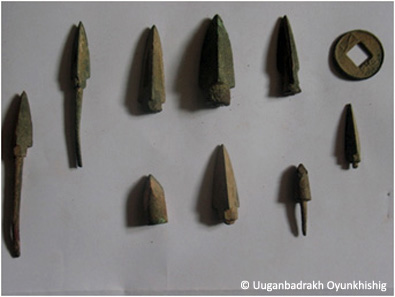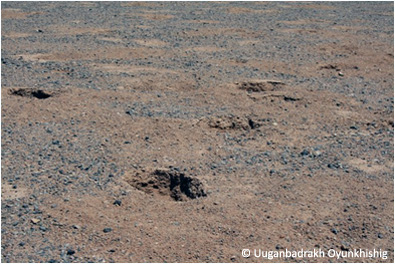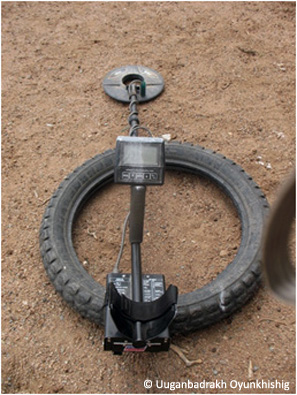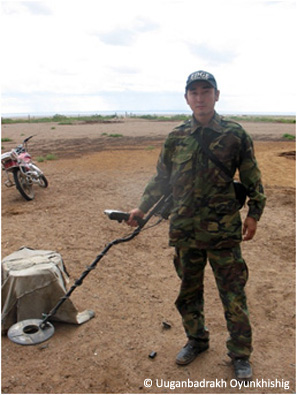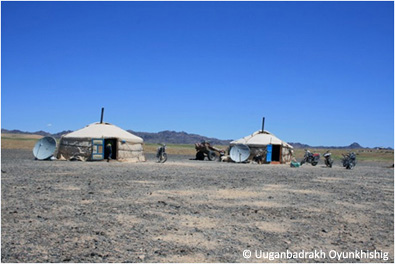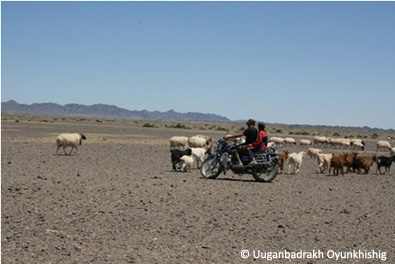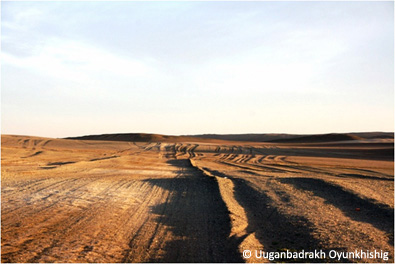EDGE Fellow Uuganbadrakh recently sent us some information on human impacts on the long-eared jerboa:
The Mongolian Gobi desert contains many ancient objects, such as rust of arrow, bone of dinosaurs, jewels and so on. But some of these ancient objects are having a negative effect on wildlife; for example, rusty arrows.
In ancient times the Mongolian empire used to fight with other countries or within the country (between a Mongolian little province and another little province). A 12th century Mongolian soldier’s main weapon was his bow and arrow. After fighting many of the arrows became rusty and gradually sank below the surface of the land. Now local people are selling these rusty arrows that they have taken from the soil. Most of the rust is imported to China. After digging, lot of holes are left on the surface of the soil. Some areas of the long-eared jerboa’s distribution are damaged in this way. In my opinion these diggings may have decreased the habitat available to the wildlife of the Gobi Desert.
To find rust, local people use a metal detector like when they are mining for gold.
If the digging continues for a long time, first Mongolian wildlife may become depleted and second, Mongolian historical artifacts may be lost. Now if we don’t conserve our wildlife, our descendants will come by empty area or empty holes.
Another human impact is the motorbike. During the socialist period, Mongolian herders used to look after their cattle by horse and camel. In the Gobi desert all herders used to ride only camel.
But since the beginning of the market economy, Gobi desert herders are getting to ride motorbikes. They’re fast, doesn’t need food, and spare parts are cheap. In some herder groups each member has a motorbike.
Right now all herders, especially in the Gobi desert, are looking after their cattle by motorbike. In the Gobi desert the motorbike is the main equipment that is used to go to sum (district) center, bring food, care for cattle and so on.
But increasing numbers of motorbikes are having a negative effect on the population of long-eared jerboas. In my study area I see lot of dead jerboas that have been hit by motorbikes at one day. It’s a really regrettable thing.
I happened upon a few dead long-eared jerboas that were hit by motorbikes. Maybe there are a lot of dead long-eared jerboas that I didn’t see.
Another problem is the open road.
Everyone can travel by any road. Probably due to the confusion of roads, lots of small mammals and insect may be killed. I met some local decision makers to discuss it. They said we will notice about it.
IF YOU HAVE ANY SUGGESTIONS, ADVICE OR IDEAS TO HELP ADDRESS THE ABOVE PROBLEMS, PLEASE COMMENT BELOW.
